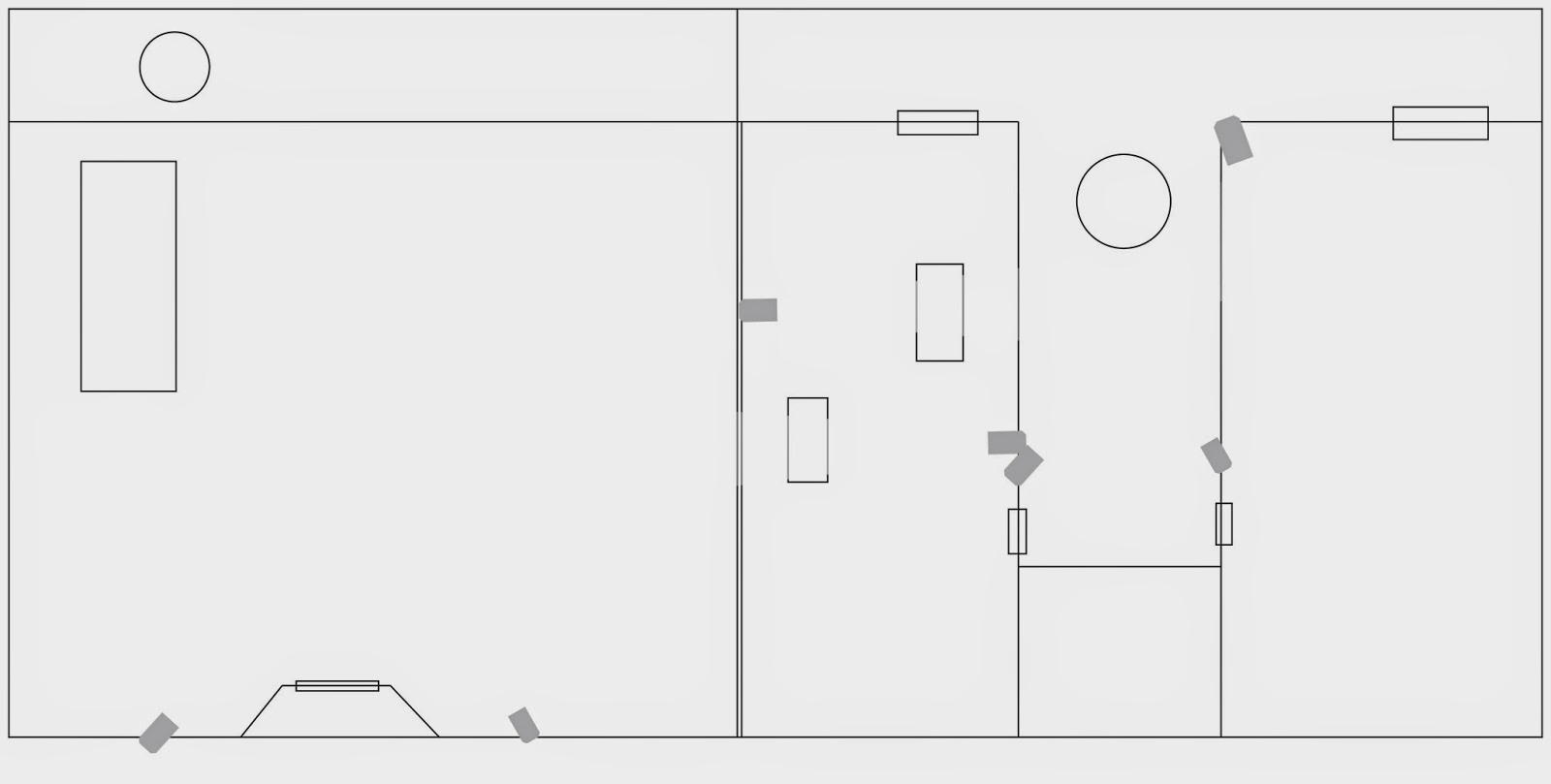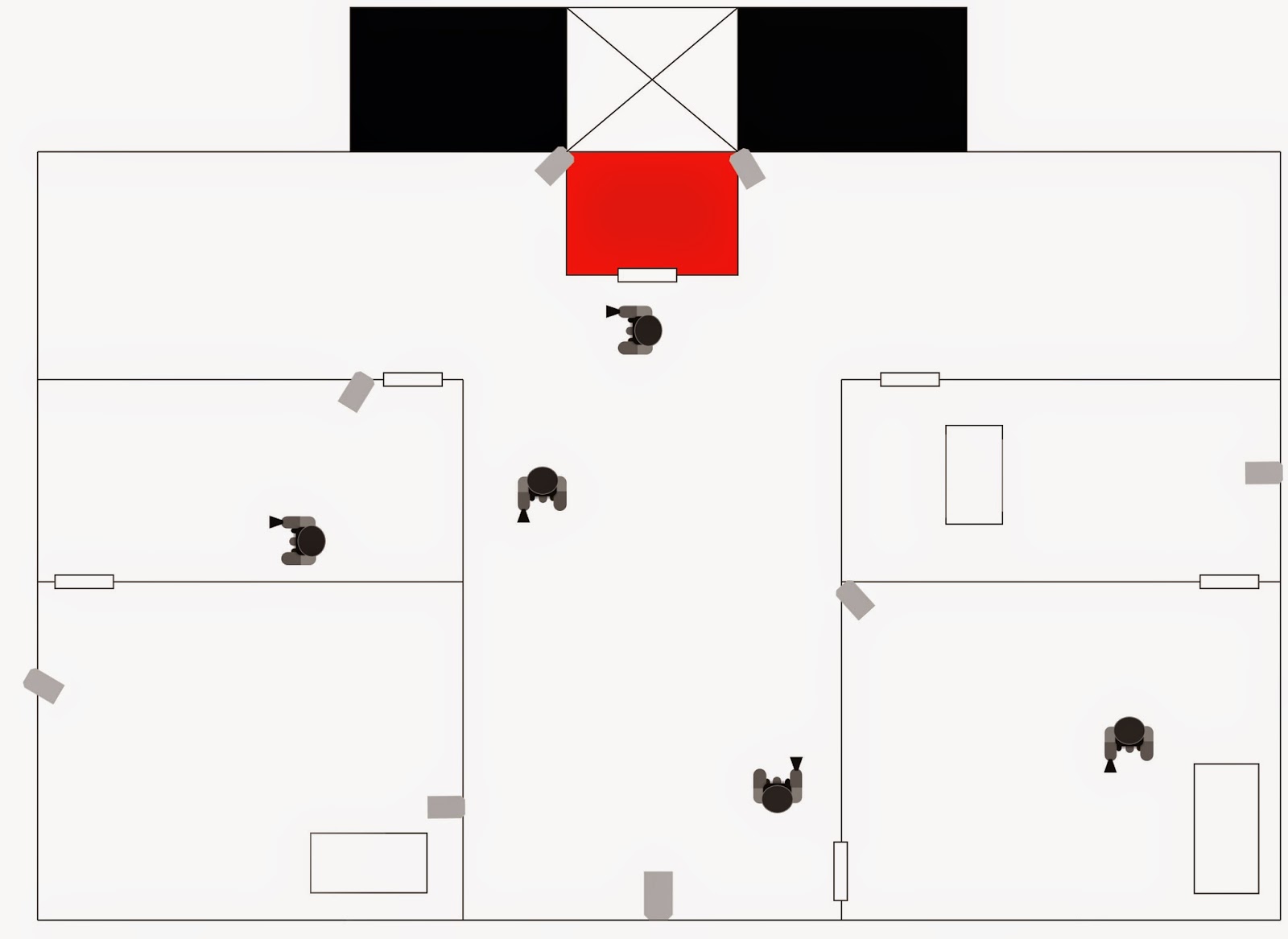Group Members:
Me, Jack, Bex, Michael, Hunter
Job Roles
Me - Character Development & Artwork/Animation
Jack - Founder of Out Of Sight, Level Design, Level Development
Bex - Level Design, Level Development
Michael - Sound, Narrative
Hunter - Ray Casting, Level Prototypes
NOTE: We all chip in and help each other if we can
Game Overview:
The game writes out the issue of government surveillance and how destructive it is/can
be. The game has a dark, noir feel to it, plus a 1950s sort of American aesthetic, whilst it is set in modern day Wellington. The objective of the game is to make your way through three levels in an art-deco style office building without being spotted by guards or surveillance cameras. Each camera has a specific movement which will determine the difficulty of the situation in that particular level. The guards walk along certain paths made and demonstrated in level prototypes. When he player is caught, the guards will gang up on the player and the 'defeat' screen will appear in this case. The final part of the game is to shut off the security system on the 3rd level. There will be an elevator cutscene whilst progressing up to the next floor/level.
Game Development:
For my part in the groups game development, I came up with some characters/spites & objects/tiles for level & character design.
CHARACTERS:
OBJECTS/TILES:
Characters:
Protagonist:
-Wears a beige chanel suit & a beige hat appearance is demonstrated on title screen.
-The characters abilities consist of bombing (the character will drop bombs to destroy various objects e.g cameras + tasering guards (enemies). The character cannot jump as the game is in a birds-eye view format and there will be no necessities for this mechanic.
Antagonists (Guards):
-Typical police appearance (cap, suit, whack-stick etc)
-The characters abilities allow having a flashlight to track down your character, plus using their whack-stick to beat down your character. (this is to be confirmed)
-Displayed in grayscale/black & white as they do not have the importance of the main character at this stage.
Dossier Files (Which will include various characters & suspects)
TBC
CHARACTER MOVEMENT & ANIMATION:
The characters each have the same movement throughout the basic stages of the game, a fast
march-like walk.
I will post vids in the future to show y'all how the animation looks in action. For now take it easy.
The protagonist below has a secondary movement
Level Design & Refurbishment:
As a group we decided to re-pixelate the tiles to a standard sizing. Jack & Bex designed the levels and put them together to make the artwork come alive.
LEVEL PLANS:
Level 1

Level 2
 Level 3
Level 3
REFURBISHED LEVELS:
(Note red areas indicate safe spots)
Level 1
Level 2
Level 3
Characters:
Protagonist:
-Wears a beige chanel suit & a beige hat appearance is demonstrated on title screen.
-The characters abilities consist of bombing (the character will drop bombs to destroy various objects e.g cameras + tasering guards (enemies). The character cannot jump as the game is in a birds-eye view format and there will be no necessities for this mechanic.
Antagonists (Guards):
-Typical police appearance (cap, suit, whack-stick etc)
-The characters abilities allow having a flashlight to track down your character, plus using their whack-stick to beat down your character. (this is to be confirmed)
-Displayed in grayscale/black & white as they do not have the importance of the main character at this stage.
Dossier Files (Which will include various characters & suspects)
TBC
CHARACTER MOVEMENT & ANIMATION:
The characters each have the same movement throughout the basic stages of the game, a fast
march-like walk.
The protagonist below has a secondary movement
The officer in attack mode:
VIDS:
Protagonist (Normal Walk):
Protagonist: (Tase):
Protagonist (Arrest):
Protagonist (Elevator/Smoke):
Guard (Normal Walk):
As a group we decided to re-pixelate the tiles to a standard sizing. Jack & Bex designed the levels and put them together to make the artwork come alive.
LEVEL PLANS:
Level 1

Level 2
 Level 3
Level 3REFURBISHED LEVELS:
(Note red areas indicate safe spots)
Level 1
Level 2
Level 3


























